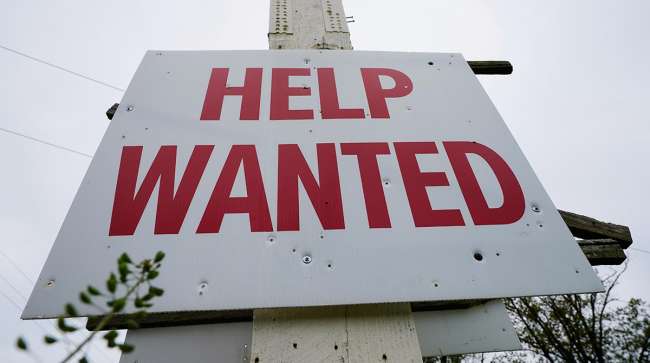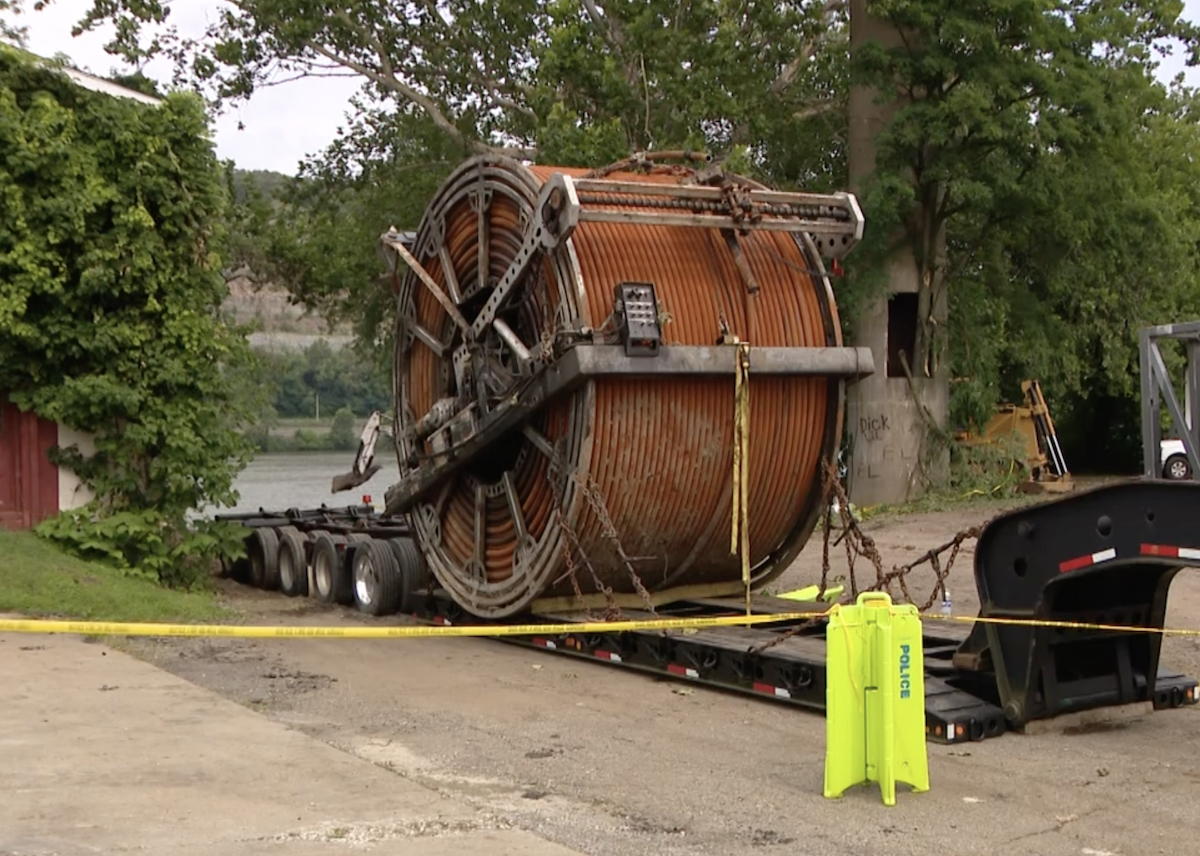(Matt Rourke/AP/File)
WASHINGTON — U.S. employers slowed hiring last month, but still added a solid 139,000 jobs amid uncertainty over President Donald Trump’s trade wars.
Hiring fell from a revised 147,000 in April, the Department of Labor said June 6. The job gains last month were slightly higher than the 130,000 economists had forecast. But revisions shaved 95,000 jobs from March and April payrolls.
The unemployment rate stayed at a low 4.2%.
Health care companies added jobs. But the federal government shed 22,000 jobs, the most since November 2020, as Trump’s job cuts and hiring freeze had an impact.
Payroll employment increases by 139,000 in May; unemployment rate unchanged at 4.2% https://t.co/ZwrVfLviqL #JobsReport #BLSdata
— BLS-Labor Statistics (@BLS_gov) June 6, 2025
Average hourly wages rose 0.4% from April and 3.9% from a year earlier — a bit higher than forecast.
Trump’s aggressive and unpredictable policies — especially his sweeping taxes on imports — have muddied the outlook for the economy and the job market and raised fears that the American economy could be headed toward recession. But so far the damage hasn’t shown up clearly in government economic data.
READ MORE: Hiring Cools to Slowest Pace in Two Years, ADP Data Shows
Economists expect Trump’s policies to take a toll on America’s economy, the world’s largest. His massive taxes on imports — tariffs — are expected to raise costs for U.S. companies that buy raw materials, equipment and components from overseas and force them to cut back hiring or even lay off workers. Billionaire Elon Musk’s Department of Government Efficiency has slashed federal workers and canceled government contracts. Trump’s crackdown on illegal immigration is expected to make it harder for businesses to find enough workers.
For the most part, though, any damage has yet to show up in the government’s economic data.
The U.S. economy and job market have proven surprisingly resilient in recent years. When the inflation fighters at the Federal Reserve raised their benchmark interest rate 11 times in 2022 and 2023, the higher borrowing costs were widely expected to tip the United States into a recession.
The big picture takeaway on May jobs report:
1) A recession does not look imminent
2) But…hiring has slowed down.
3) Only healthcare and hospitality are hiring much now
4) -49,200 federal gov’t jobs shed since December
5) -95,000 down in job revisions for March & AprilThis… pic.twitter.com/hFF0VpN9UX
— Heather Long (@byHeatherLong) June 6, 2025
Still, the job market has clearly decelerated. So far this year, American employers have added an average of fewer than 124,000 jobs a month. That is down from 168,000 last year, 216,000 in 2023, 380,000 in 2022.
And former Fed economist Claudia Sahm warns that the job market of 2025 isn’t nearly as durable as the two or three years ago when immigrants were pouring into the U.S. job market and employers were posting record job openings.
“Any signs of weakness in the data this week would stoke fears of a recession again,” Sahm, now chief economist at New Century Advisors, wrote in a Substack post this week. “It’s too soon to see the full effects of tariffs, DOGE, or other policies on the labor market; softening now would suggest less resilience to those later effects, raising the odds of a recession.’’
Recent economic reports have sent mixed signals.
The Labor Department reported June 3 that U.S. job openings rose unexpectedly to 7.4 million in April — seemingly a good sign. But the same report showed that layoffs ticked up and the number of Americans quitting their jobs fell, a sign they were less confident they could find something better elsewhere.
Brian Work of CloneOps.ai discusses where AI agents fit into today’s supply chain workflows and what they might mean for the future of trucking operations. Tune in above or by going to RoadSigns.ttnews.com.
Surveys by the Institute for Supply Management, a trade group of purchasing managers, found that both American manufacturing and services businesses were contracting last month.
And the number of Americans applying for unemployment benefits rose last week to the highest level in eight months.
Jobless claims — a proxy for layoffs — still remain low by historical standards, suggesting that employers are reluctant to cut staff despite uncertainty over Trump’s policies. They likely remember how hard it was to bring people back from the massive but short-lived layoffs of the 2020 COVID-19 recession as the U.S. economy bounced back with unexpected strength.
Still, the job market has clearly decelerated. So far this year, American employers have added an average 144,000 jobs a month. That is down from 168,000 last year, 216,000 in 2023, 380,000 in 2022 and a record 603,000 in 2021 in the rebound from COVID-19 layoffs.
Trump’s tariffs — and the erratic way he rolls them out, suspends them and conjures up new ones — have already buffeted the economy. America’s gross domestic product — the nation’s output of goods and services — fell at a 0.2% annual pace from January through March this year.
A surge of imports shaved 5 percentage points off growth during the first quarter as companies rushed to bring in foreign products ahead of Trump’s tariffs. Imports plunged by a record 16% in April as Trump’s levies took effect. The drop in foreign goods could mean fewer jobs at the warehouses that store them and the trucking companies that haul them around, wrote Michael Madowitz, an economist at the left-leaning Roosevelt Institute.







